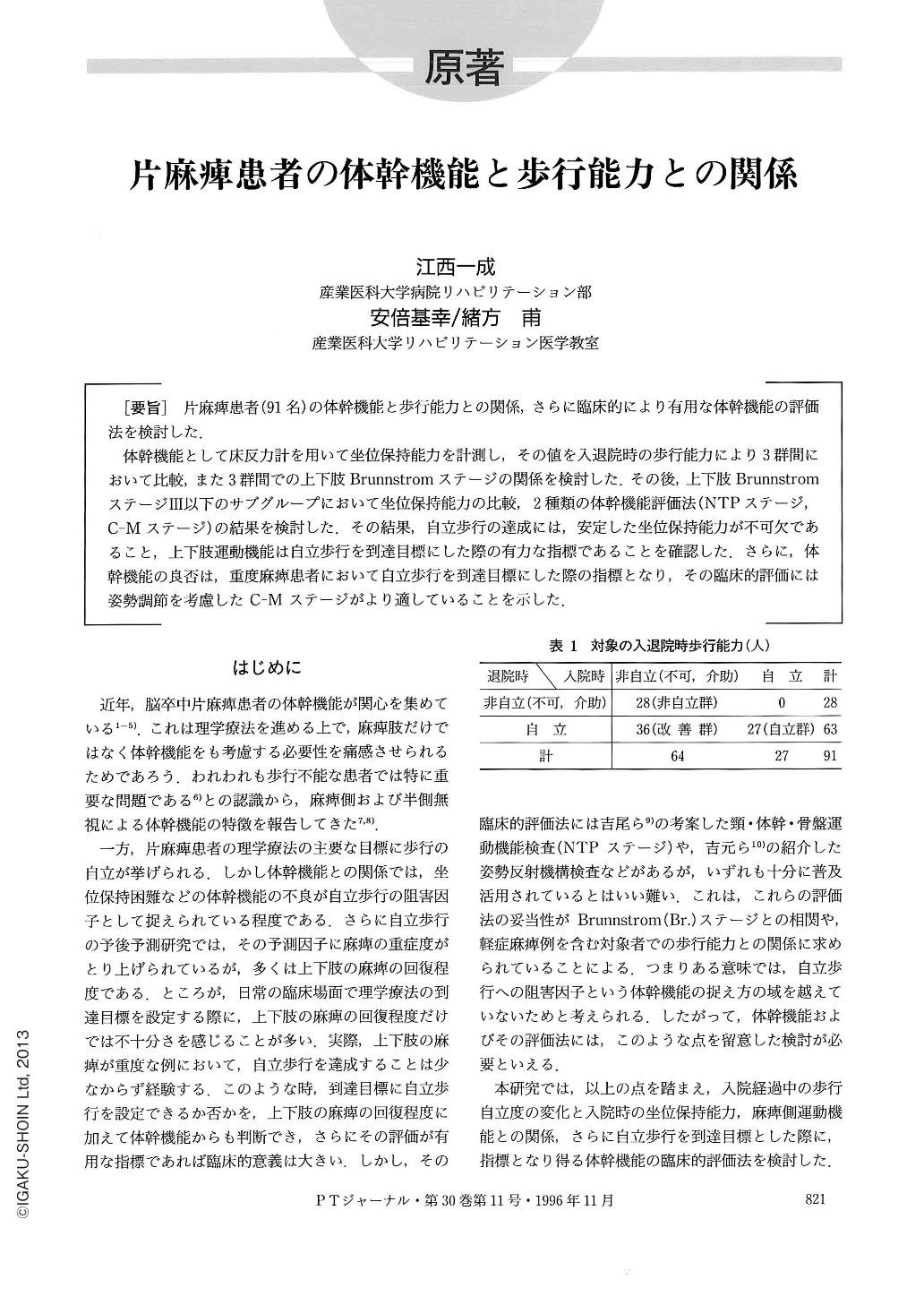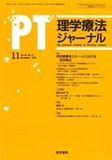Japanese
English
- 有料閲覧
- Abstract 文献概要
- 1ページ目 Look Inside
[要旨]片麻痺患者(91名)の体幹機能と歩行能力との関係,さらに臨床的により有用な体幹機能の評価法を検討した.
体幹機能として床反力計を用いて坐位保持能力を計測し,その値を入退院時の歩行能力により3群間において比較,また3群間での上下肢Brunnstromステージの関係を検討した.その後,上下肢BrunnstromステージⅢ以下のサブグループにおいて坐位保持能力の比較,2種類の体幹機能評価法(NTPステージ,C-Mステージ)の結果を検討した.その結果,自立歩行の達成には,安定した坐位保持能力が不可欠であること,上下肢運動機能は自立歩行を到達目標にした際の有力な指標であることを確認した.さらに,体幹機能の良否は,重度麻痺患者において自立歩行を到達目標にした際の指標となり,その臨床的評価には姿勢調節を考慮したC-Mステージがより適していることを示した.
We investigated the relationship between trunk function and walking ability in 91 hemiplegic patients and examined the usefulness of trunk function assessment.
Using a force plate to measure sitting balance, we compared trunk function among three groups classified according to gait abilities at admission and discharge, we also examined the relations of Brunnstrom stages for upper and lower extremities to walking ability. We further compared sitting balance in patients with the results of two trunk function evaluation methods-NTP Stage(functional motor examination for the neck, trunk and pelvis in hemiplegia)and C-M Stage (Chedoke-McMaster Assessment, postural control).
The results showed that stable sitting balance was requisite for independence in gait and that paretic limb function was an effective index to predict walking ability for most hemiplegic patients. In severe paretic patients, quality of trunk function appeared to be an important sign to predict gait ability. Of the two methods to assess hemiplegic trunk function, C-M stage was more effective for clinical purposes.

Copyright © 1996, Igaku-Shoin Ltd. All rights reserved.


